In the USA, creationism is prohibited to teach in schools. However, since Americans are inclined to religion, it is the same as every contraband. It does happen. Evolutionary biology vs. creationism in schools is still a hot topic.
You have an extremely proven and evidence-based theory which is, in fact, a reality. And then you have lying, misleading, pseudoscientific, contradicting, evidence-free incompatible pseudotheories (yes, the plural is right: unlike mainstream science, pseudosciences manifest themselves with the abundance of many theories and branches).
There are legal rulings that prohibit the promotion of religious doctrines, such as Edwards v. Aguillard (1987) and Kitzmiller v. Dover (2005). However, it persists in other forms. In public schools, some teachers avoid teaching evolution or subtly introduce creationist ideas, particularly in religiously conservative areas. Private religious schools and homeschooling programs openly include creationism in their curricula, often framing it as a scientific explanation alongside or instead of evolution. Charter schools and voucher programs sometimes indirectly support schools that teach creationism. While public schools are legally bound to maintain a secular curriculum, the influence of creationism continues through informal practices, religious advocacy, and alternative educational settings. This creates significant variation in how science education is delivered across the country.
History: From Biblical creation, ban of the evolution to learning to creationism
The history of creationism in U.S. schools is a long and contentious story, but the term “creationism” itself did not emerge until much later. In the beginning, the prevailing worldview in most American schools was rooted in biblical literalism. Teachers and textbooks often referred to the Genesis account of creation as historical fact, but it was not labeled as “creationism.” It was simply considered the default explanation for origins in a predominantly Christian society. This changed as evolutionary science gained prominence, forcing the development of the creationist movement and its eventual terminology.
In the 19th century, public education in America was deeply intertwined with religion. Schools frequently incorporated Bible readings, prayers, and teachings about the creation story without any significant opposition. Science education was relatively undeveloped, and Charles Darwin’s revolutionary ideas in On the Origin of Species (1859) had not yet reached mainstream acceptance. By the late 19th and early 20th centuries, however, evolutionary theory began appearing in science curricula. This sparked resistance from religious groups who viewed it as a threat to biblical teachings, though they did not yet identify as “creationists.”
The backlash against evolution
The backlash against evolution gained momentum in the 1920s. States like Tennessee passed laws banning the teaching of evolution, such as the Butler Act of 1925. This led to the famous Scopes “Monkey Trial,” where teacher John T. Scopes was prosecuted for teaching evolution in defiance of the Butler Act. The trial became a national spectacle, symbolizing the clash between modern science and religious fundamentalism. Although Scopes was found guilty, the trial highlighted the growing tensions between secular science and traditional beliefs. During this period, opposition to evolution was framed as defending Christian teachings rather than advancing “creationism” as a distinct concept.
The term “creationism” began to emerge in the mid-20th century, particularly as evolution became more widely accepted in public education. The launch of the Soviet satellite Sputnik in 1957 spurred a renewed focus on science and technology in schools. Evolution returned to textbooks as an essential part of biology, prompting organized resistance from religious groups. It was around this time that the modern creationist movement began to take shape. Early proponents of “creationism” sought to frame their beliefs as a valid alternative to evolution, emphasizing a literal interpretation of the Genesis account.
Evolutionary biology vs. Bible: Unfortunately, creationism goes official
In the 1960s and 1970s, the term “creationism” became more formalized with the rise of “creation science.” This movement aimed to present creationist beliefs using scientific-sounding arguments. Books like The Genesis Flood (1961) by Henry Morris and John Whitcomb laid the groundwork for young Earth creationism, which posited that the Earth was only thousands of years old and that a global flood shaped geological features. Creation science sought to reframe biblical literalism as a scientific theory, though it was ultimately rejected by the courts as pseudoscience.
Creationism banned
The legal battle over creationism culminated in several landmark cases. In Edwards v. Aguillard (1987), the Supreme Court ruled that teaching creation science in public schools violated the Establishment Clause of the First Amendment. The court determined that creation science was inherently religious and could not be taught alongside evolution in public school science classes. This ruling dealt a major blow to the creationist movement, but it did not end the debate.
Following this defeat, creationists shifted their strategy. They introduced “intelligent design” in the 1990s as a way to distance their arguments from overtly religious language. Intelligent design claimed that life’s complexity could not be explained by natural processes alone and must involve a higher intelligence. Proponents argued that it was a scientific theory rather than a religious belief. However, this strategy also failed in the courts. In Kitzmiller v. Dover Area School District (2005), a federal court ruled that intelligent design was creationism rebranded and barred its teaching in public school science classes.
Creationism still persists
Evolutionary biology vs. creationism has been going on. Despite these legal defeats, creationism continues to persist in various forms. Some states have passed laws promoting “academic freedom,” allowing teachers to present supposed controversies in evolution. Others have adopted science standards that emphasize the “weaknesses” of evolutionary theory, a strategy aimed at undermining its teaching. Creationism thrives in private religious schools and homeschooling curricula, where it remains a core component of science education.
In summary, the history of creationism in U.S. schools reflects a broader cultural and ideological struggle. Early opposition to evolution was rooted in defending Christian teachings rather than advancing “creationism” as a distinct movement. The term and concept of creationism only emerged later, as a response to the growing acceptance of evolution and the legal challenges to religious instruction in public schools. Over time, creationism evolved into “creation science” and later intelligent design, adapting to changing cultural and legal landscapes. While court rulings have firmly established evolution as the scientific standard in public education, the battle over creationism continues in various forms, reflecting the enduring tension between science and religion in American society.
Officially non-existent, yet being practiced
Creationism is not officially taught in public schools in the United States, but that doesn’t mean it has disappeared from classrooms. The law prohibits it. Yet, creationism persists in various forms, often through loopholes or alternative educational settings. Understanding how this happens requires a closer look at the laws, the types of schools, and the ways communities navigate this contentious issue.
Public schools are legally obligated to teach science in alignment with the First Amendment. This means they must avoid promoting religious doctrines like creationism. Landmark court cases such as Edwards v. Aguillard (1987) explicitly banned teaching creationism as science in public schools. The courts deemed it a religious belief, not a scientific theory. Another case, Kitzmiller v. Dover (2005), rejected “intelligent design” as an alternative. Intelligent design often masquerades as a scientific theory. But courts have consistently ruled that it is creationism in disguise.
However, laws do not always prevent personal biases or indirect methods of introducing creationist ideas. In some areas, teachers avoid teaching evolution altogether. Some may present creationism informally, especially in communities with strong religious majorities. This creates inconsistencies in how science is taught across the country. While evolution is a cornerstone of modern biology, it is downplayed or omitted in some public school classrooms.
Private schools do what they want to do
Private schools are another story. Religious private schools are not bound by the same restrictions as public schools. They frequently include creationism in their science curricula. These schools rely on funding from tuition and religious organizations, so they have greater freedom to promote their beliefs. Curricula from publishers like Abeka and Bob Jones University Press openly teach creationism. These materials present biblical stories as literal scientific explanations for the origins of life.
Homeschooling is another avenue for creationism to thrive. Many families who homeschool do so to integrate religious teachings into their children’s education. Creationism is often a significant part of this. Educational resources for homeschooling families sometimes include anti-evolution narratives and pro-creationist arguments. Parents have the freedom to choose what their children learn, and many opt for materials that align with their religious beliefs.
Charter schools present a grey area. These schools are publicly funded but operate independently. While they are supposed to adhere to constitutional restrictions, some charter schools have faced scrutiny for including religious content. In rare cases, this has extended to creationist teachings. The autonomy of charter schools makes oversight more challenging, allowing some to skirt around restrictions.
Evolutionary biology vs. creationism: Taxpayer money for creationism
Public funding can indirectly support creationism through voucher programs. These programs allow public funds to be used for private school tuition. Many private schools participating in voucher programs are religious and teach creationism. This creates a controversial situation where taxpayer money may subsidize schools promoting religious doctrines.
Religious communities also exert pressure on local school boards and educators. In highly religious areas, there is often significant opposition to teaching evolution. Some parents demand that schools “teach both sides,” a strategy to introduce creationism as a valid alternative. Others advocate for “academic freedom” laws. These laws would allow teachers to discuss so-called controversies in evolution. This framing suggests evolution is debatable, despite overwhelming scientific consensus.
The persistence of creationism in schools reflects broader cultural and political tensions. Scientific education is often caught between constitutional principles and deeply rooted religious beliefs. This creates disparities in what students learn, depending on where they live or the type of school they attend.
Creationism continues to shape American education, despite legal rulings. It thrives in private schools, homeschooling, and through indirect methods in public schools. This reality demonstrates the ongoing struggle between religious influence and the pursuit of secular, evidence-based education. The debate is far from over, and its outcome will shape how future generations understand science and the world around them.
Fact-check! Evolutionary biology vs. creationism: How dare you teach creationism?
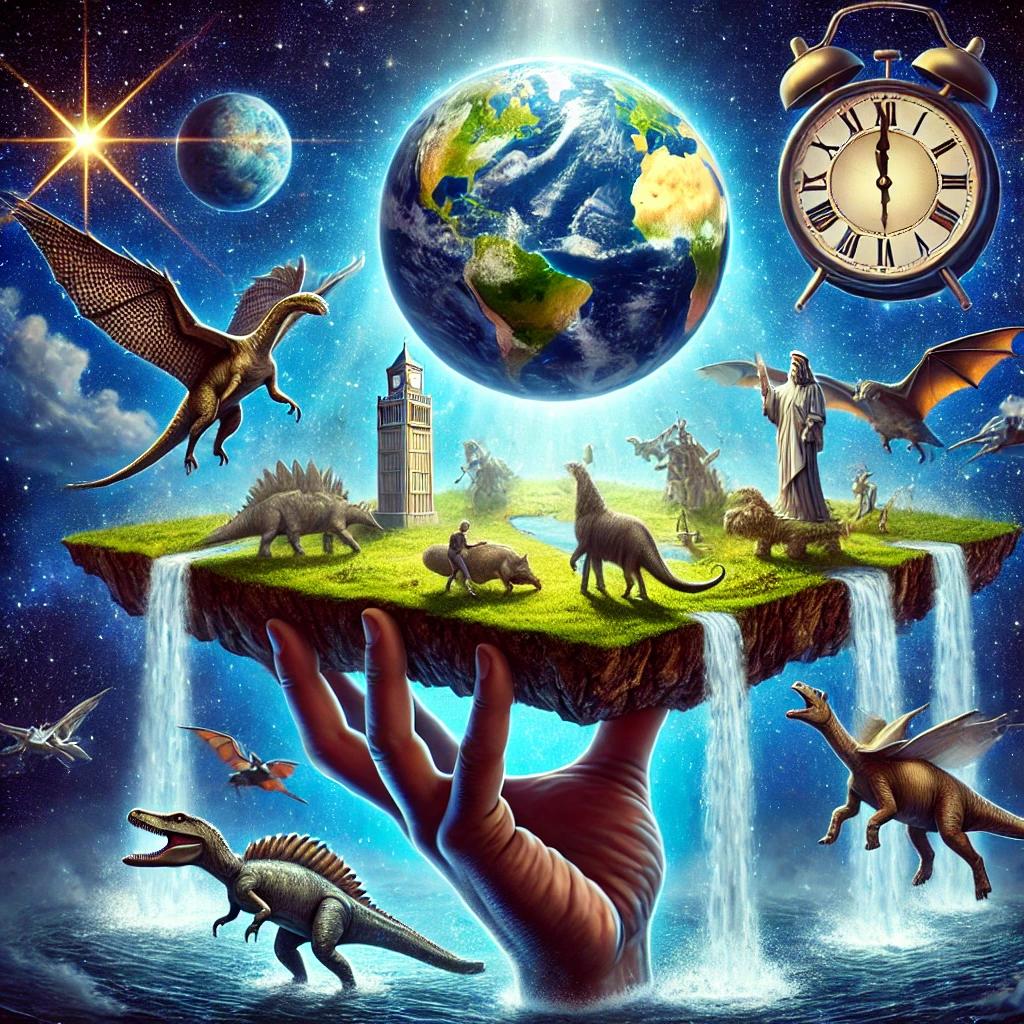
Creationism, despite its continued presence in various educational systems, remains a pseudoscience that fails to meet even the most basic standards of scientific rigor. To critique creationism effectively, it is crucial to examine its claims and compare them against the overwhelming evidence supporting evolution and natural processes.
At its core, creationism asserts that the universe and all life forms were created by a supernatural being in their present form, often within a timeframe of thousands of years. This idea is rooted in religious texts, such as the Bible, and presents itself as an alternative to evolutionary theory. However, this foundation is inherently flawed because it is based on faith, not evidence. Science operates on the principles of observation, experimentation, and falsifiability. Creationism, by contrast, offers no testable predictions, nor does it change when faced with contradicting evidence. Instead, it relies on misrepresentations, cherry-picked data, and appeals to ignorance.
One of the central tenets of modern creationism is the belief in a young Earth. Proponents claim that the Earth is only about 6,000 to 10,000 years old, often citing biblical genealogies as evidence. This assertion directly contradicts vast amounts of data from multiple scientific fields. Radiometric dating, for instance, consistently demonstrates that the Earth is approximately 4.5 billion years old. Techniques such as uranium-lead dating, potassium-argon dating, and carbon-14 dating have been cross-verified across independent studies and remain among the most reliable tools in geology and paleontology. Furthermore, the layering of sedimentary rocks, ice core sampling, and the fossil record reveal processes and events that span millions, and in some cases billions, of years. None of these findings align with a young Earth.
The everlasting claims of lacking fossils: Completely wrong!
Another creationist argument centers on the supposed lack of transitional fossils. Creationists often claim that there are no fossils showing intermediate stages between major groups of organisms. This is demonstrably false. Fossils like Tiktaalik (a transition between fish and tetrapods), Archaeopteryx (linking dinosaurs and birds), and numerous hominin fossils (connecting humans to other primates) clearly illustrate evolutionary processes. These transitional forms provide concrete evidence of gradual change over time, directly refuting creationist claims that species were created in their current forms.
Too complex, we see God
Intelligent design, a rebranded form of creationism, argues that certain biological structures are too complex to have evolved through natural selection. Proponents use terms like “irreducible complexity” to suggest that systems such as the bacterial flagellum or the human eye could not function if any part were removed, thus requiring a designer. However, extensive research has shown that these structures can and do evolve incrementally. Simpler precursors often serve different functions before becoming co-opted into more complex systems. For example, components of the bacterial flagellum resemble simpler structures used in different cellular processes. Intelligent design fails as a scientific theory because it offers no testable hypotheses and relies on gaps in current knowledge, rather than producing positive evidence.
Everything complex means God’s work
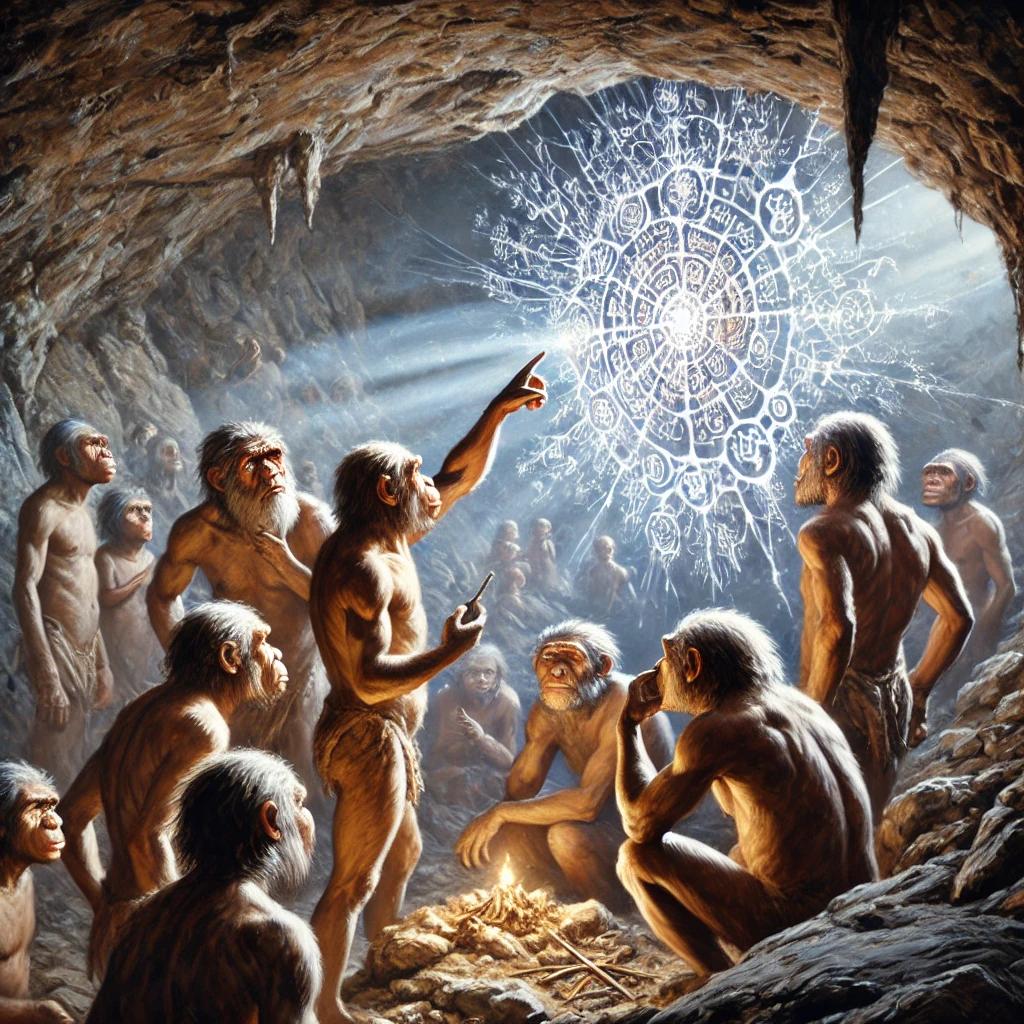
Human beings have an innate tendency to seek meaning and patterns in the world around them. It is evolutionary-given. This inclination is deeply tied to our capacity for understanding others – what psychologists call a “theory of mind.” While this cognitive skill allows us to navigate social interactions by attributing thoughts and intentions to others, it also leads us to assign agency to natural events and phenomena. For many, this instinct results in perceiving a divine presence – a god, spirit, or universal force – behind the complexity of the world.
The world is undeniably intricate. From the vast interconnectedness of ecosystems to the unpredictable outcomes of human societies, the sheer scale of interdependence and complexity can feel overwhelming. Natural disasters, economic downturns, and even personal misfortunes often appear chaotic and unexplainable. Faced with this uncertainty, many turn to the idea of a divine orchestrator. Seeing God in everything provides a narrative that brings coherence to the seemingly chaotic tapestry of existence. It transforms randomness into purpose and offers solace in the face of life’s unpredictability.
This perception of divine agency is not merely a cultural construct but deeply rooted in human cognition. For early humans, attributing intentionality to unknown forces had survival value. A rustling in the bushes might have been interpreted as a predator, even if it turned out to be the wind. Over time, this predisposition to assume agency – even where none existed – became a fundamental aspect of human thought. It extended beyond immediate survival to larger questions about existence, leading to the development of religious and spiritual beliefs.
Agency nowadays
In modern times, this tendency to see agency in complexity persists. For some, the intricate beauty of nature – the precise balance of ecosystems, the vastness of the cosmos, and the intricacies of life itself – is proof of divine design. They see God in the details of a flower, the rhythm of the seasons, or the vast expanse of the universe. This perspective offers a sense of connection and purpose, anchoring individuals in a world that can otherwise feel indifferent and impersonal.
However, this instinct also has its challenges. The same cognitive wiring that leads people to see God in the complexity of the world can also result in oversimplification. It’s easy to attribute all events, good or bad, to divine will, bypassing the intricate systems and natural processes that underlie them. For example, attributing a natural disaster to divine punishment or a blessing to supernatural favor ignores the scientific explanations that reveal the true causes of these events. While faith can provide comfort, over-reliance on divine agency can limit curiosity and understanding of the natural world.
Theory of mind: Critical thinking
To truly appreciate the complexity of the world, it’s essential to balance this instinct with critical thinking and a willingness to embrace uncertainty. Seeing God in everything can be a powerful source of inspiration and comfort, but it should coexist with a recognition of the intricate systems and processes that govern the natural world.
Evidence for evolution? Who really cares?
The creationist narrative also fails to address the overwhelming genetic evidence supporting evolution. Comparative genomics reveals striking similarities among species, pointing to shared ancestry. Humans and chimpanzees, for instance, share about 98-99% of their DNA. Endogenous retroviruses (ERVs), remnants of ancient viral infections, are found in identical locations in the genomes of related species, further confirming evolutionary relationships. These genetic markers would be inexplicable under a creationist framework but fit seamlessly into the evolutionary model.
Beyond its lack of scientific credibility, creationism is also ethically problematic when introduced into educational systems. Presenting it as an alternative to evolution misleads students about the nature of science and undermines critical thinking. Science is not about equal time for all ideas; it is about evidence. Evolution is supported by mountains of data from fields as diverse as biology, geology, paleontology, and genetics. Creationism, on the other hand, remains a faith-based belief system with no empirical grounding.
Evolutionary biology vs. creationism: Rather teach creationism
In addition to misleading students, the promotion of creationism often comes at the expense of teaching well-established scientific concepts. Time spent defending creationism in the classroom detracts from meaningful discussions about genetics, ecology, climate science, and other important topics. This educational gap leaves students ill-prepared to understand the natural world or address challenges like biodiversity loss, climate change, and public health issues – all areas where evolutionary principles play a critical role.
Finally, it is important to recognize that creationism’s persistence is not due to its scientific merit but to cultural and religious motivations. Many individuals and groups feel threatened by the implications of evolution, fearing that it undermines their belief systems. However, personal discomfort with a scientific theory does not invalidate its evidence. Science is not about comfort or ideology; it is about rigorous inquiry and a commitment to understanding reality.
Creationism is not simply a harmless alternative perspective. It is a pseudoscience that distorts facts, misleads students, and hampers scientific progress. By contrast, evolution provides a unifying framework for understanding the complexity of life on Earth, supported by a vast body of evidence. Teaching creationism as science undermines the integrity of education and denies students the tools they need to engage with the world critically and competently. For these reasons, creationism has no place in science classrooms, where evidence-based learning must remain the cornerstone of education.
Evolutionary biology as the truth
Evolutionary biology stands as one of the most rigorously tested and well-supported fields in modern science. It is built on a foundation of evidence that spans multiple disciplines, including genetics, paleontology, comparative anatomy, and developmental biology. This body of research not only demonstrates how life changes over time but also provides detailed explanations for the evolution of complex organs and systems. Far from being a speculative theory, evolutionary biology is a proven framework supported by an overwhelming wealth of data.
The fossil record is one of the cornerstones of evolutionary evidence. Transitional fossils provide clear examples of how one group of organisms evolved into another. For instance, fossils like Tiktaalik bridge the gap between aquatic fish and land-dwelling tetrapods, while Archaeopteryx shows the transition from dinosaurs to modern birds. These fossils reveal intermediate forms, offering a step-by-step view of how new features and adaptations arise over time. They debunk the creationist claim that evolution lacks transitional forms by showcasing the gradual transformations predicted by evolutionary theory.
Genetics
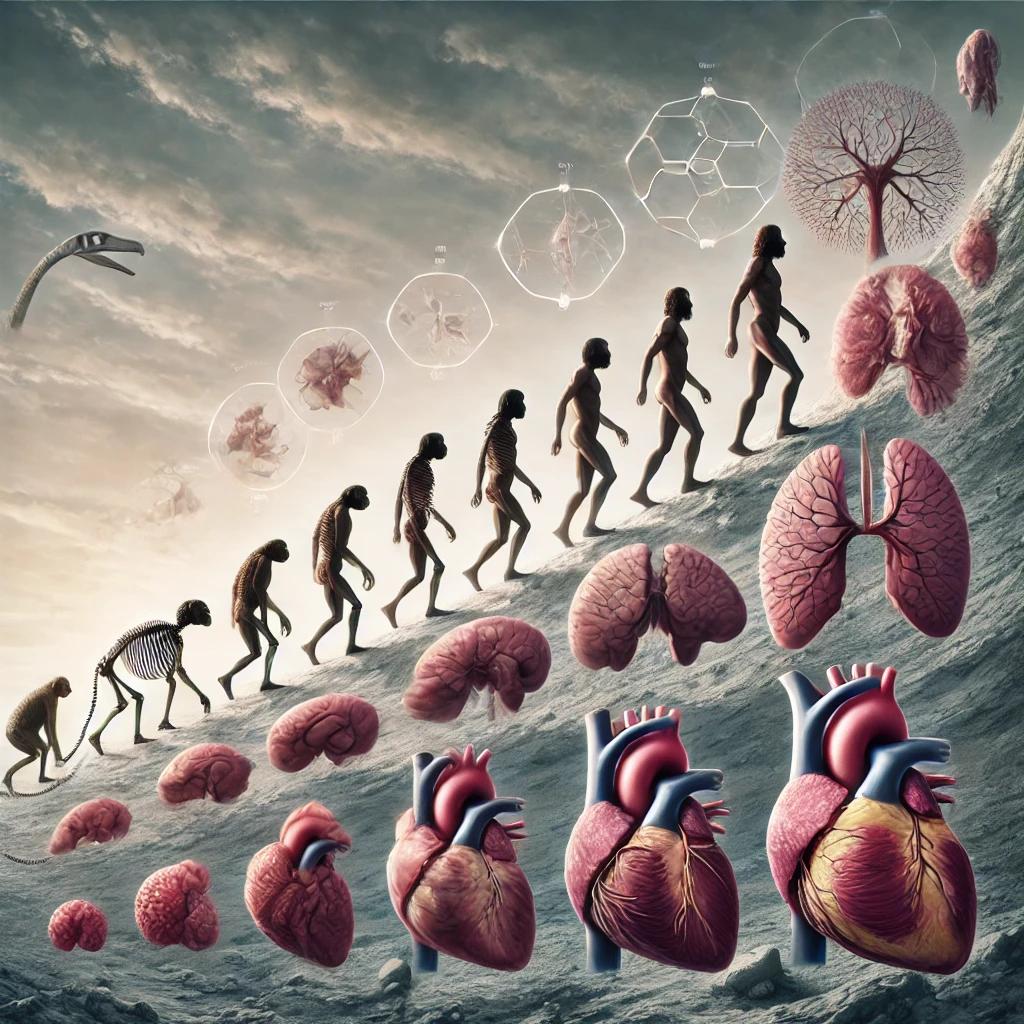
Genetics adds another layer of irrefutable evidence. The evolution of complex organs, often cited as a challenge to evolutionary theory, is actually one of its greatest triumphs. Take the eye, a favorite target of creationists who argue it is “irreducibly complex.” Evolutionary biology shows otherwise. Eyes evolved incrementally from simple light-sensitive patches of cells to the sophisticated structures we see in various species today. Each step – from detecting light to forming images – offered an adaptive advantage. Studies of living organisms provide snapshots of this progression: flatworms with simple eyespots, mollusks with pinhole cameras, and vertebrates with fully developed lenses. These examples demonstrate how small, cumulative changes can produce remarkable complexity.
Similarly, the bacterial flagellum, often cited as a structure that could not have evolved, has a clear evolutionary history. Research has shown that its components resemble simpler molecular machines, such as the Type III secretion system used by some bacteria. These systems likely served different functions in ancestral organisms before being co-opted and modified into the flagellum. This incremental process aligns perfectly with evolutionary principles and refutes the notion of “irreducible complexity.”
Developmental biology
Developmental biology also sheds light on how organs evolve. The study of embryonic development reveals how small genetic changes can lead to significant morphological differences. Hox genes, for instance, play a crucial role in determining the body plan of an organism. Variations in these genes can lead to profound changes, such as the evolution of fins into limbs or the diversification of insect body segments. These findings underscore how evolution operates on existing genetic blueprints, tweaking them to produce new forms and functions.
Beyond individual cases, evolutionary biology’s predictive power solidifies its status as a cornerstone of science. The theory of evolution predicts patterns in the fossil record, genetic similarities across species, and even the discovery of new species that fill gaps in our understanding. For example, scientists hypothesized the existence of Tiktaalik based on gaps in the fossil record and then found it in rocks of the predicted age and environment. This ability to make accurate predictions sets evolutionary biology apart from pseudoscientific ideas like creationism, which offers no testable hypotheses.
You don’t respect evolutionary biology? So start not respecting physics or chemistry
The rigorous methodology behind evolutionary biology mirrors the precision of disciplines like physics or chemistry. Hypotheses are tested against observable evidence, and the theory is refined as new data emerge. This process has been ongoing for over 150 years, and every discovery – from the structure of DNA to the mapping of genomes – has reinforced the framework of evolution. Far from being a static or dogmatic belief system, evolutionary biology thrives on its adaptability and its capacity to integrate new findings.
In sum, evolutionary biology is a polished, exact, and proven field of science. Its conclusions are drawn from an immense body of evidence that spans millions of years and encompasses all forms of life. The intricate details of how organs evolved, how species are connected, and how life adapts over time are not only understood but continually confirmed by new discoveries. Evolutionary biology is a testament to the power of scientific inquiry, offering a profound and evidence-based understanding of life on Earth.
Evolutionary biology vs. creationism in schools: Conclusion
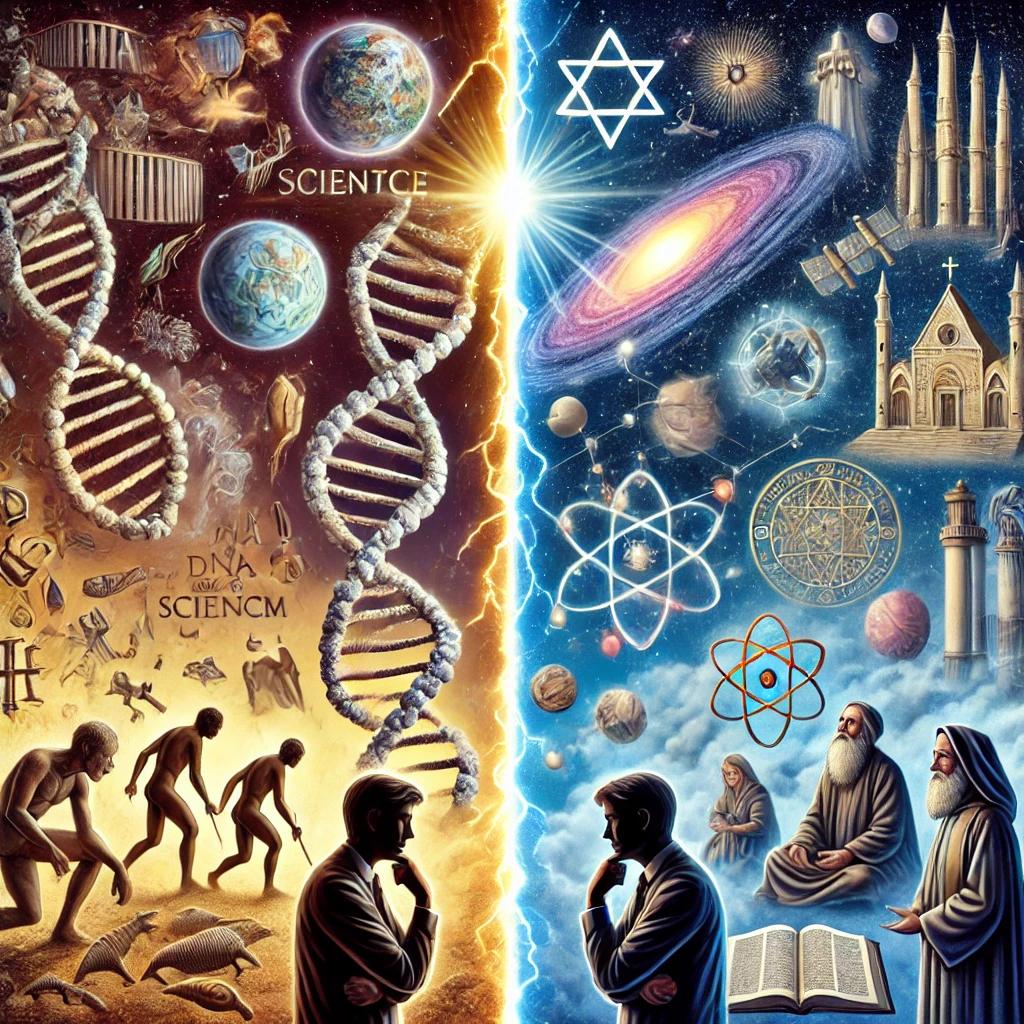
Lying to children is one of the most perverting things, especially when it comes to lying, superstitious, Bronze Age myths with no internal logic and evidence. Children, pupils, or students should have natural curiosity. But how to develop it?
From a young age, children, pupils, or students naturally have curiosity, but developing it requires intentional effort. Encouraging them to ask questions and explore freely is crucial. Providing hands-on experiences, like experiments or creative projects, makes learning engaging and tangible. Let them investigate their interests, offering tools and resources to dive deeper. Avoid giving immediate answers. Instead, guide them to find solutions themselves. Foster an environment where mistakes are seen as learning opportunities, not failures. Model curiosity by asking questions and sharing your excitement for discovery. By nurturing their sense of wonder and encouraging exploration, their natural curiosity grows into a lifelong love of learning.
Critically and with curiosity
To think critically and develop curiosity, students must be exposed to foundational frameworks like evolutionary biology. Evolutionary theory is not just a body of knowledge. It is a model of evidence-based reasoning. It shows how observations, patterns, and data can connect to explain complex phenomena. Teaching evolution goes beyond biology. It teaches how to think, question, and evaluate information.
Evolutionary theory challenges students to integrate knowledge from different disciplines. It connects genetics, geology, paleontology, and comparative anatomy. This interdisciplinary approach fosters systems thinking. Students see how different pieces of evidence come together to form a larger picture. It trains them to move beyond isolated facts and think in terms of connections and patterns.
One of the key lessons of evolutionary biology is questioning assumptions. Evolution often contradicts intuitive beliefs, like the idea that organisms are perfectly “designed.” Learning about natural selection, adaptation, and gradual change forces students to confront and analyze their biases. This is the heart of critical thinking: asking why things are the way they are and not taking ideas at face value.
Evolution means the scientific process
Teaching evolution also means teaching the scientific process. Students learn how Darwin and others built the theory through observation, hypothesis testing, and debate. They see how theories evolve when new evidence emerges. This understanding demystifies science. It shows students that critical thinking is not about memorizing answers but about asking questions and following evidence.
Practical activities can bring this to life. Students can examine transitional fossils like Tiktaalik or compare homologous structures like the human arm and whale fin. They can analyze genetic evidence, like shared DNA sequences in humans and chimpanzees. Questions like “Why do bacteria develop resistance to antibiotics?” force them to think critically and use evidence to explain real-world phenomena.
Evolutionary theory also teaches the importance of being open to complexity. It demonstrates that answers are rarely simple but emerge from studying patterns over time. Students learn that good explanations must align with evidence, even if they are counterintuitive or challenging to accept.
By learning evolutionary biology, students gain more than scientific knowledge. They develop the tools to analyze, question, and think critically about the world around them. Evolution is not just a theory about life; it is a framework for intellectual growth. It equips students with skills they can apply to any field, building their curiosity and sharpening their minds.
Creationism has its place only to study why people are attracted to it
Creationism, as a worldview that posits the universe and life were created by a divine being in a manner inconsistent with established scientific evidence, deserves robust criticism for its rejection of empiricism and its impact on education and intellectual progress. The theory of evolution, backed by overwhelming evidence from genetics, fossil records, and observable natural phenomena, provides a coherent explanation of biodiversity through natural selection and adaptation. By contrast, creationism ignores this evidence, relying on literal interpretations of religious texts written in eras of limited scientific understanding. Such a stance not only misrepresents the nature of science – where theories are testable, falsifiable, and built on empirical data – but also misleads individuals and communities, perpetuating ignorance about fundamental scientific principles. This dogmatic rejection of science undermines critical thinking skills and fosters an anti-intellectual culture that can hinder societal advancement.
Studying creationism, however, is valuable – not as a legitimate alternative to evolutionary theory, but as a sociological and psychological phenomenon that reveals insights into human cognition, belief formation, and cultural identity. People gravitate towards creationism for reasons rooted in comfort, group identity, and resistance to existential uncertainties posed by science. Cognitive biases, such as the tendency to favor simple explanations or anchor to prior beliefs, play a significant role in its appeal. Understanding why creationism attracts followers enables scientists, educators, and policymakers to address these concerns empathetically. This approach can facilitate more effective science communication, bridging the gap between scientific literacy and cultural beliefs, rather than allowing pseudo-science to flourish unchallenged. Creationism should be studied not to validate its claims, but to understand its sociocultural persistence and to craft strategies that promote rational thought and evidence-based learning.
A huge federal eradication plan may help
To eliminate creationism from U.S. schools, launch a comprehensive national program: “Science Forward.” This initiative reshapes science education, addresses misinformation, and builds public support for evolution and evidence-based learning.
First, overhaul teacher training. Provide mandatory workshops for science educators nationwide. These workshops focus on evolution, critical thinking, and responding to common creationist claims. Partner with universities and research institutions to ensure cutting-edge resources.
Second, create a federal science curriculum. Standardize what public schools teach about evolution and biology. Include case studies, experiments, and real-world applications. Tie funding to adherence. Schools failing to meet these standards lose access to federal grants.
Third, launch public outreach campaigns. Use media, social platforms, and influencers to explain evolution in simple terms. Show its relevance to health, agriculture, and innovation. Highlight success stories from countries with strong science education. Counter creationist narratives with facts, but keep the tone approachable.
Fourth, involve parents and communities. Host open forums at schools. Let parents see how evolution fits into science education. Provide easy-to-read materials that debunk myths about evolution. Emphasize how evidence-based learning prepares students for success.
Fifth, strengthen legal enforcement. Monitor public schools for breaches of the church-state divide. Establish a reporting system for violations. Fund legal teams to challenge any attempt to sneak creationism into classrooms. Publicize these efforts to deter others.
Finally, measure progress. Track changes in science literacy through national assessments. Compare test scores and STEM enrollment rates before and after the program. Share results to maintain momentum and secure long-term support.
This program combines education, law, and outreach. It protects the integrity of science education, and prepares students for the modern world. It ensures schools teach facts, not beliefs.
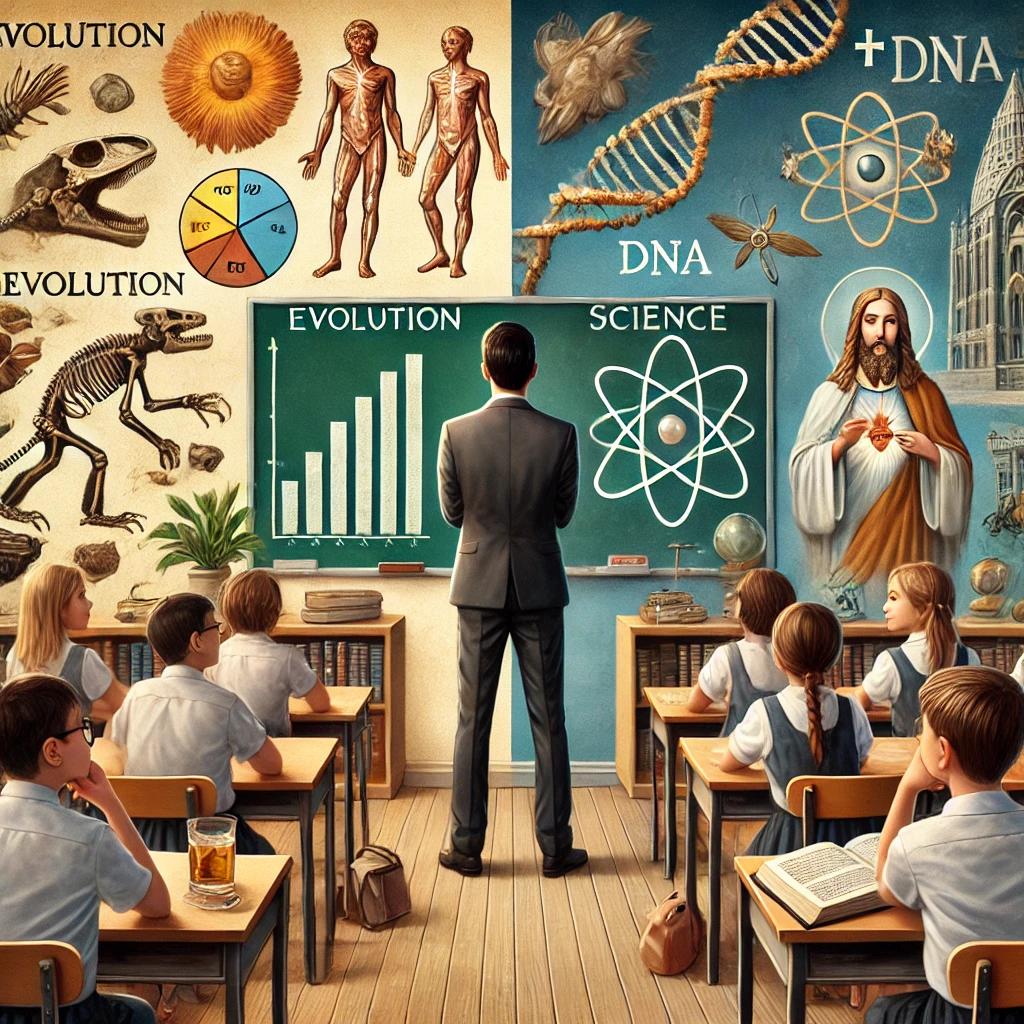
Leave a Reply